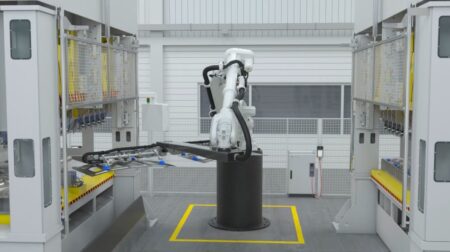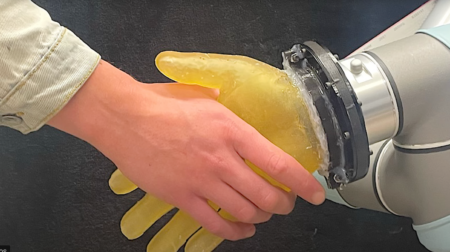Researchers at Northwestern University, Illinois has developed an aquatic soft robot that has been inspired by sea creatures to walk, roll and transport cargo.
The robot is only a centimetre in size and functions inside a water-filled tank resembling a four-legged octopus. It has an embedded aligned nickel filament skeleton, is light activated and moves using an external rotating magnetic field.
The team has said it can serve a variety of functions in aquatic environments including to help catalysing a chemical reaction and remove unwanted particles. The researchers added the robot can use its mechanical movements and locomotion to deliver bio-therapeutics or cells to specific tissues.
Samuel I. Stupp, who led the experimental research, said: “Conventional robots are typically heavy machines with lots of hardware and electronics that are unable to interact safely with soft structures, including humans.
“We have designed soft materials with molecular intelligence to enable them to behave like robots of any size and perform useful functions in tiny spaces, underwater or underground.”
The research, published in the journal of Science Robotics, explores how the robot responds to magnetic fields to steer materials to follow specific trajectories. It said by combining responses to light and magnetic fields the robot can pick up cargo and deliver it to a destination by walking or rolling.
Furthermore, the robot can invert its shape to enable payloads to gently slide off or performs a spinning ‘break dance’ to dislodge and release the object.
Stuff added: “The design of the new materials that imitate living creatures allows not only a faster response but also the performance of more sophisticated functions.
“We can change the shape and add legs to the synthetic creatures and give these life-like materials new walking gaits and smarter behaviours. This makes them highly versatile and amenable to different tasks.”
The team said the soft robotic material has the potential to create objects for chemical production, new tools for environmentally important technologies or as smart biomaterials for highly advanced medicine.







